Antibacterial properties of silver nanoparticles in three different sizes and their nanocomposites with a new waterborne polyurethane
- PMID: 21187943
- PMCID: PMC3010153
- DOI: 10.2147/IJN.S14572
Antibacterial properties of silver nanoparticles in three different sizes and their nanocomposites with a new waterborne polyurethane
Abstract
Silver nanoparticles (AgNPs) are strong bactericidal agents but they are also cytotoxic. Embedding them in a polymer matrix may reduce their cytotoxic effect. In the present study, AgNPs in three average sizes were tested for their antibacterial activities and cytotoxicity. Nanocomposites from a new waterborne polyetherurethane (PEU) ionomer and AgNPs were prepared without the use of any crosslinker. It was observed that the antibacterial activity of AgNPs against Escherichia coli started at the effective concentration of 0.1-1 ppm, while that against Staphylococcus aureus started at higher concentrations of 1-10 ppm. Cytotoxicity of AgNPs was observed at the concentration of 10 ppm. AgNPs with smaller average size showed greater antibacterial activity as well as cytotoxicity. The PEU synthesized in this study showed high tensile strength, and the addition of AgNPs at all sizes further increased its thermal stability. The delicate surface features of nanophases, however, were only observed in nanocomposites with either small-or medium-sized AgNPs. PEU-Ag nanocomposites had a strong bacteriostatic effect on the growth of E. coli and S. aureus. The proliferation of endothelial cells on PEU-Ag nanocomposites was enhanced, whereas the platelet adhesion was reduced. The expression of endothelial nitric oxide synthase gene was upregulated on PEU-Ag containing small-sized AgNPs (30 ppm) or medium-sized AgNPs (60 ppm). This effect was not as remarkable in nanocomposites from large-sized AgNPs. Overall, nanocomposites from the PEU and 60 ppm of the medium-sized (5 nm) AgNPs showed the best biocompatibility and antibacterial activity. Addition of smaller or larger AgNPs did not produce as substantial an effect in PEU, especially for the larger AgNPs.
Keywords: antibacterial activity; biocompatibility; polyurethane; silver nanoparticles.
Figures
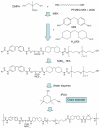
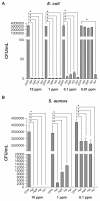


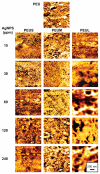

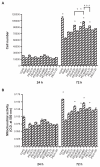
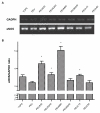
References
-
- Zuhuang J. Bactericidal nanosilver cloth and its making process and use. CN 1387700. Patent number. 2003
-
- Lee HJ, Yeo SY, Jeong SH. Antibacterial effect of nanosized silver colloidal solution on textile fabrics. J Mat Sci. 2003;38(10):2199–2204.
-
- Jain P, Pradeep T. Potential of silver nanoparticle-coated polyurethane foam as an antibacterial water filter. Biotechnol Bioeng. 2005;90(1):59–63. - PubMed
-
- Alt V, Bechert T, Steinrücke P, et al. Nanoparticulate silver. A new antimicrobial substance for bone cement. Orthopade . 2004;33(8):885–892. - PubMed
-
- Foldbjerg R, Dang DA, Autrup H. Cytotoxicity and genotoxicity of silver nanoparticles in the human lung cancer cell line, A549. Arch Toxicol. 2010 Apr 29; [Epub ahead of print] - PubMed
Publication types
MeSH terms
Substances
LinkOut - more resources
Full Text Sources
Other Literature Sources
Medical

